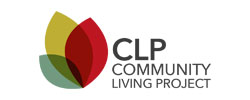Self-directed Support begins with assisting each person to identify what is important for them in their paid support, helping them to individually recruit workers who fit with their vision, as well as managing the workers in their day-to-day activities.
This is further strengthened through the active involvement of family and friends in supporting this process and helping to build the person’s skills. See the Seven Steps to self-direction for more detail.
The Community Living Project uses a Self-directed Support model that builds the capacity of people with disability and their families to choose, train and direct the staff who are providing support. This model offers the optimum environment for people and families to build choice, control and flexibility with paid support and services.
The focus is on ‘one person at a time’ (and their family), developing each person’s capacity and understanding of how to build a good life. To us, this means a life of inclusion in which everyone matters and all people are welcomed, included and contributing to community life.
https://www.high-endrolex.com/14
Family leadership is centred on practices that enable ‘right relationship’ where supports are strongly aligned to the person’s individual needs and wishes and delivered with (not ‘for’, or ‘to’) the person.
Self-directed Support may not be for every person/family. Our experience is that people with disability who have a network of informal support (family and friends), and families who have the desire and belief that self directing will provide the choice and control they are seeking, are best placed to succeed in this model.
The content of this post is also published in the CLP Family Leadership Booklet.

